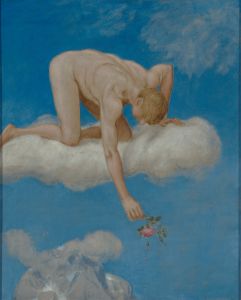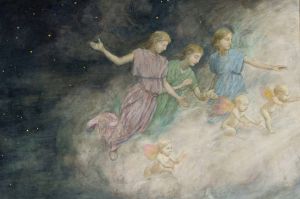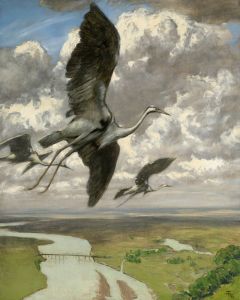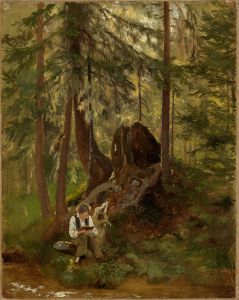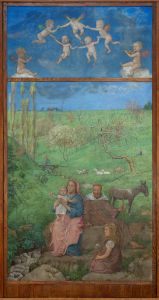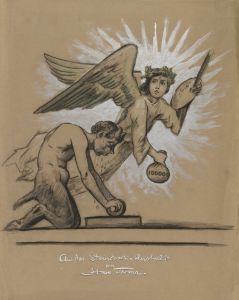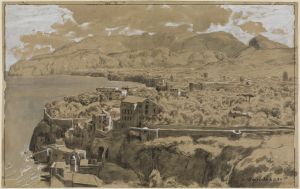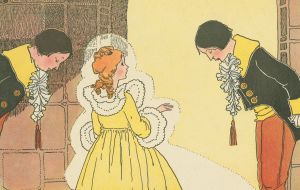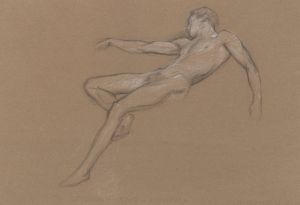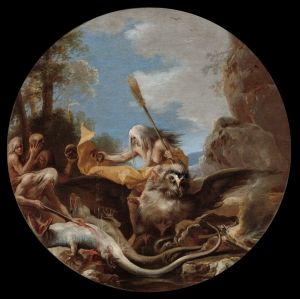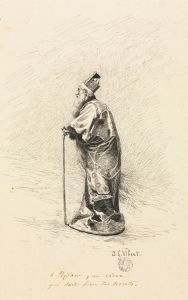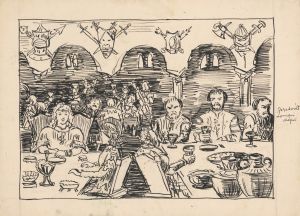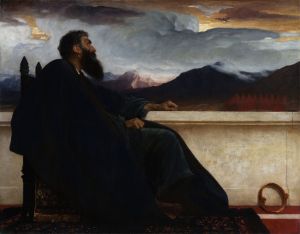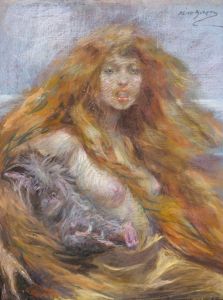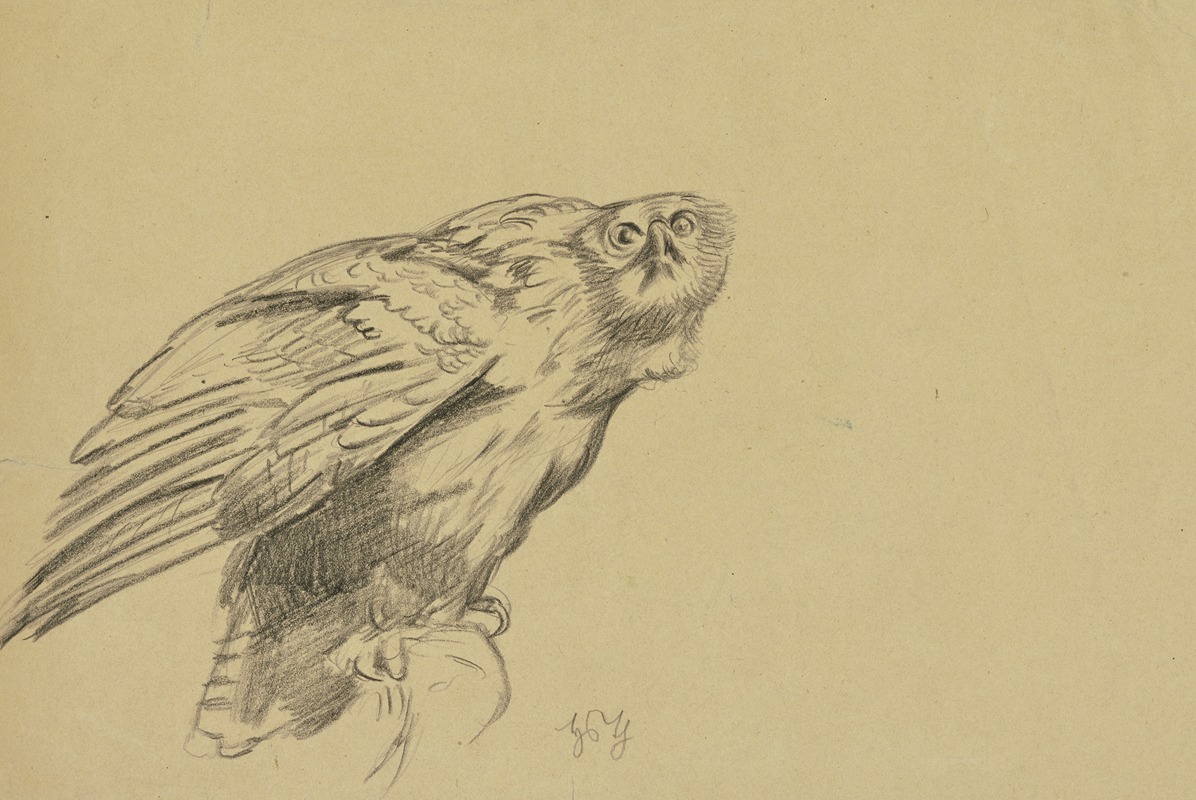
Harpy
A hand-painted replica of Hans Thoma’s masterpiece Harpy, meticulously crafted by professional artists to capture the true essence of the original. Each piece is created with museum-quality canvas and rare mineral pigments, carefully painted by experienced artists with delicate brushstrokes and rich, layered colors to perfectly recreate the texture of the original artwork. Unlike machine-printed reproductions, this hand-painted version brings the painting to life, infused with the artist’s emotions and skill in every stroke. Whether for personal collection or home decoration, it instantly elevates the artistic atmosphere of any space.
Hans Thoma was a German painter born on October 2, 1839, in Bernau in the Black Forest, and he became one of the most prominent figures in the German art scene during the late 19th and early 20th centuries. Thoma's work is known for its detailed realism and often incorporates elements of German folklore and mythology. One of his notable works is "Harpy," which reflects his interest in mythological themes.
The painting "Harpy" by Hans Thoma depicts a harpy, a creature from Greek mythology that is often portrayed as a bird with a human face. Harpies were traditionally seen as wind spirits or as agents of punishment, known for their swift and predatory nature. Thoma's interpretation of the harpy, however, is unique and reflects his distinctive style and approach to mythological subjects.
In Thoma's "Harpy," the creature is rendered with a meticulous attention to detail, characteristic of his broader body of work. The painting captures the harpy in a serene and contemplative pose, which contrasts with the more traditional depictions of harpies as fearsome and chaotic beings. This portrayal may suggest Thoma's interest in exploring the duality of mythological creatures, presenting them as both beautiful and menacing.
Thoma's use of color and light in "Harpy" is notable. The palette is rich and vibrant, with a focus on natural tones that enhance the mythical and otherworldly quality of the subject. The background of the painting often features elements of nature, such as trees or mountains, which are common in Thoma's work and reflect his deep connection to the landscapes of his native Black Forest.
The painting is also an example of Thoma's skill in blending realism with fantasy. While the harpy is a mythical creature, Thoma's depiction is grounded in a realistic style that brings a sense of believability to the fantastical subject. This approach is consistent with Thoma's broader artistic philosophy, which sought to bridge the gap between the real and the imaginary.
Hans Thoma's "Harpy" is part of a larger body of work that includes portraits, landscapes, and other mythological scenes. Throughout his career, Thoma was influenced by the Romantic movement, as well as by the works of earlier German masters such as Albrecht Dürer. His paintings often reflect a deep appreciation for nature and a fascination with the mystical and the mythical.
Thoma's work, including "Harpy," has been exhibited in various galleries and museums, and he remains an influential figure in the history of German art. His ability to capture the essence of mythological subjects with a realistic touch has earned him a lasting legacy, and his paintings continue to be studied and admired for their technical skill and imaginative depth.





